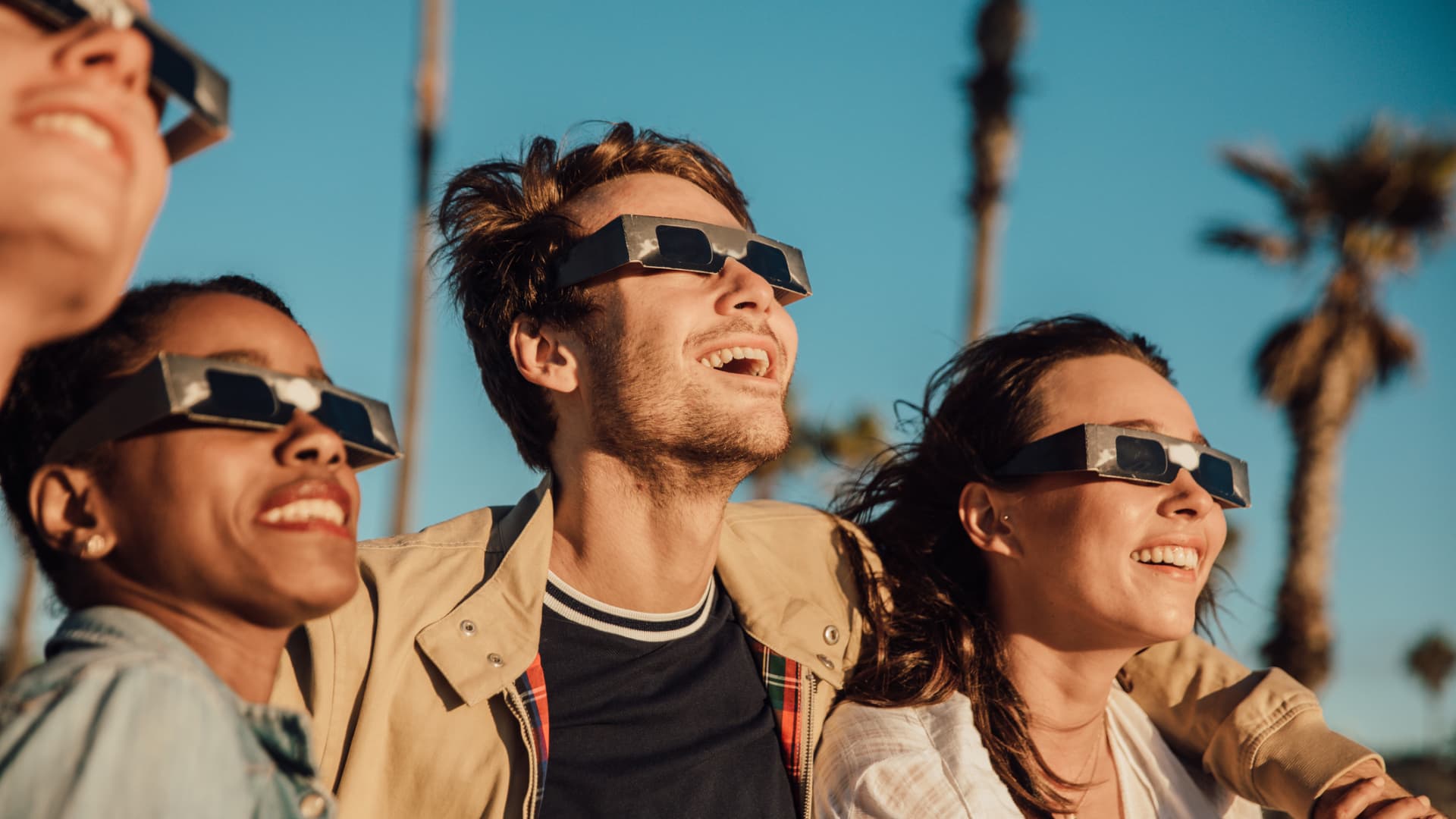
On Oct. 14, there will be a visible solar eclipse in several parts of the U.S. — mainly on the west coast in states like California and Oregon.
Depending on weather conditions, the annular solar eclipse will appear visible in Oregon at 9:13 a.m. PDT and end in Texas at 12:03 p.m. CDT, according to NASA. The eclipse may also be partially visible in other parts of the country as well.
You may have been told that you shouldn’t look directly at a solar eclipse and laughed it off, but what this eye doctor has to say will probably change your mind.
DON’T MISS: Quiz: How’s your sleep? See if you have more knowledge and better habits than most people
“The worst thing we can do is to ever look directly at the eclipse,” says Ronald Benner, an optometrist and president of the American Optometric Association. “Even a split second.”
“Looking at [an] eclipse, the amount of solar radiation that comes off can actually burn the inside of the eyeball. Kind of like a sunburn, but not really a sunburn,” Benner says. “This actually affects the neuro-tissue in the back of the eye which is brain tissue.”
But unlike a sunburn, “once that tissue has been damaged, it may or may never recover,” he adds.
You risk permanent damage by looking at a solar eclipse without eye protection
The proper term for “eclipse blindness” is solar retinopathy, and it can potentially weaken your eyesight.
According to AOA, symptoms people can experience after viewing a solar eclipse without proper protection include:
- Loss of central vision
- Altered color vision
- Distorted vision
The damages of “eclipse blindness” don’t always present right away, Benner adds.
“Solar retinopathy effects sometimes don’t show up for four to six to 10 hours after the burns have already happened,” he says. “Then it continually gets worse and worse over the next few days. From that point, it may recover. It may recover in six days, it may recover in six months [or] it may never recover.”
So how can you get a glimpse of this unique experience while also protecting your eyes? “Make sure that you have eye protection on,” says Benner.
How to view the solar eclipse safely
Wearing eye protection to view the solar eclipse is the safest precaution you can take to view it, but having the right kind matters.
“Sunglasses, unfiltered telescopes, and polarizing filters are not safe to use to view an eclipse,” according to AOA.
Even the darkest shade of sunglasses won’t protect you if they don’t meet certain requirements, Benner adds. The glasses or viewers, including telescopes, that you use to watch the solar eclipse should meet the International Organization for Standardization, or ISO, of 12312-2, according to the American Astronomical Society.
You can also opt for watching the solar eclipse through videos or by viewing images of it on social media or TV if that’s the safest way you can do it, Benner recommends.
Remember to be mindful of your children viewing the solar eclipse as well, he adds. Consider placing a sticky note somewhere that you’ll pass by often, to remind yourself about when the eclipse will be taking place in your area.
“In my practice, I’ve had a few people over the years who’ve had [solar retinopathy] and they will tell you, ‘Yeah, I looked at the eclipse,’ and their eye has never been the same. And there is no way to recover vision once that damage has been done,” says Benner.
For this solar eclipse, Benner encourages you to “enjoy it, but make sure you enjoy it with the proper eye protection on.”
DON’T MISS: Want to be smarter and more successful with your money, work & life? Sign up for our new newsletter!
Want to earn more and land your dream job? Join the free CNBC Make It: Your Money virtual event on Oct. 17 at 1 p.m. ET to learn how to level up your interview and negotiating skills, build your ideal career, boost your income and grow your wealth. Register for free today.
